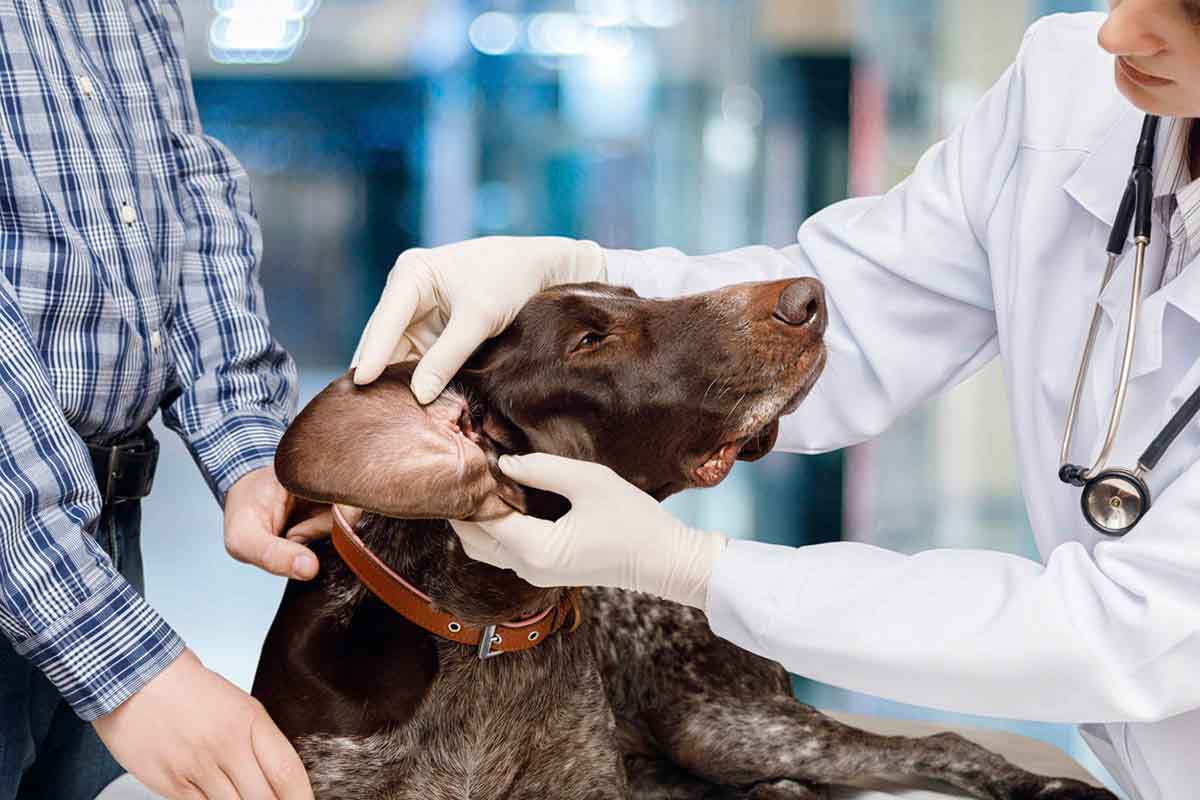How to Tell If Your Dog Has Worms
Parasites like worms can affect your dog’s health and, in some cases, even be transmitted to humans. Here's what to look out for.
Worms are one of those unpleasant but important topics every loving pet parent should know about. Parasites like worms can affect your dog’s health and, in some cases, even be transmitted to humans.
Understanding how to identify, diagnose, treat, and prevent worms is key to keeping your furry friend happy and healthy. Let’s dive into everything you need to know about dog worms.
What are the Types of Worms That Affect Dogs?

Dogs can be infected by several types of worms, each causing different symptoms and requiring specific treatments. These worms can be broadly divided into two categories: intestinal worms and other types.
Intestinal Worms
Intestinal worms are, as the name implies, intestinal parasites that live in your dog’s digestive system, feeding on nutrients or blood. They are among the most common types of worms and can cause a variety of health problems if not treated promptly.
Roundworms are the most common type of worms in dogs. Puppies are particularly susceptible, often being born with roundworms or acquiring them through their mother’s milk. Dogs infected with roundworms may exhibit a pot-bellied appearance, vomiting, diarrhea, weight loss, and, in some cases, visible worms in their feces or vomit.
Hookworms are tiny but dangerous parasites that attach to the dog’s intestinal wall and feed on blood. Puppies are especially vulnerable to hookworms, which can lead to severe anemia. Symptoms include pale gums, weakness, black or tarry stools, and weight loss.
Tapeworms, often transmitted through fleas, inhabit the small intestine. They can cause symptoms such as itching around the anus, visible segments that appear as grains of rice in his stool or on your dog’s fur (particularly around the anus), and occasional digestive upset.
Whipworms, while less common, reside in the large intestine and can be problematic. They often cause chronic diarrhea, sometimes accompanied by blood, weight loss, and dehydration.
Other Types of Worms and Parasites
While intestinal worms primarily affect the digestive tract, other types of worms invade different parts of your dog’s body and can lead to severe complications.
Heartworms, which invade the heart and lungs, pose a serious threat to dogs. Spread through mosquito bites, heartworm infections can be life-threatening. Dogs with heartworms may exhibit coughing, fatigue, difficulty breathing, and reduced exercise tolerance.
Lungworms reside in the lungs and airways and can cause respiratory problems. Common symptoms include coughing, wheezing, difficulty breathing, and lethargy.
Lastly, while not worms, Coccidia and Giardia are microscopic parasites often confused with worms. These protozoa can cause severe diarrhea, particularly in puppies. They inhabit the intestinal tract and will occasionally ‘bloom’ inside your dog’s intestines. This can cause abdominal pain, diarrhea, and vomiting.
What is Toxacara canis?

One of the most significant roundworms affecting dogs is Toxocara canis. This parasite is particularly concerning because it can also infect humans, leading to a condition known as visceral or ocular larva migrans.
Puppies are commonly infected with Toxocara canis through their mother’s milk or even before birth via the placenta.
In infected animals, Toxocara canis can cause symptoms like a pot-bellied appearance, diarrhea, vomiting, and poor growth in puppies. The adult worms can sometimes be seen in the dog’s feces or vomit, which is an alarming sight for pet owners.
Beyond physical symptoms, this roundworm poses a zoonotic risk, meaning it can infect humans. This makes hygiene and early treatment critical.
Toxocara canis eggs are highly resilient and capable of surviving in soil for years. This resilience contributes to their widespread nature and the risk they pose to both pets and people.
Routine deworming, proper sanitation, and avoiding areas contaminated with feces are essential steps in managing and preventing Toxocara canis infections.
What are the Symptoms of Worms?
While some dogs may show no symptoms, others exhibit clear signs of a worm infestation. Visible worms or worm segments in your dog’s stool or vomit are obvious indicators. Another sign is a bloated or pot-bellied appearance, especially in puppies.
Digestive issues such as diarrhea, sometimes with blood, vomiting, and weight loss despite a normal or increased appetite, are also common, particularly with severe infestations. Other signs of worms include a dull coat or hair loss.
It is also important to know that an infestation can be so severe that it causes a blockage in the intestinal tract, which can be a life-threatening condition that requires immediate veterinary attention.
Behavioral changes, such as scooting or dragging their rear end on the ground, are often due to irritation that can be caused by the presence of worms. You might also see blood in your dog’s poop due to the irritation of the lining of the intestinal tract.
Pale gums, which are a sign of anemia, and respiratory issues like coughing or difficulty breathing are associated with certain types of worms, such as heartworms and lungworms. Finally, fatigue and a general lack of energy can indicate a worm infestation. If you notice any of these symptoms, it’s essential to consult your veterinarian promptly.
How Should You Prepare for a Visit to the Vet?

When you take your pooch to the veterinarian, you’ll want to be sure to be prepared to discuss any behavioral changes and symptoms you’ve been seeing. You’ll also want to take a stool sample so they can analyze it for parasites.
Collecting a fecal sample might not be the most glamorous task, but it’s an essential step in diagnosing worms. Here’s how to do it effectively:
- Container: Start by using a clean container, such as a disposable plastic container with a lid or a Ziploc bag. Many veterinarians also provide special containers specifically for this purpose. To maintain the sample’s integrity, ensure the container is free of contaminants.
- Collection: When collecting the stool, always use gloves or a scooping tool to avoid direct contact with the feces. Aim to collect a small amount—about the size of a tablespoon is sufficient for testing. Make sure the sample is as fresh as possible to provide accurate results.
- Storage: If you can’t bring the sample to the vet immediately, store it in the refrigerator to keep it fresh. Avoid freezing it, as this could interfere with the testing process. Finally, label the sample with your dog’s name and the date of collection to ensure it is properly identified when you hand it to your veterinarian.
What Should You Tell the Veterinarian?
When visiting the vet, be prepared to provide a thorough account of your dog’s condition. Start by describing your dog’s symptoms, such as diarrhea, weight loss, or coughing. Mention any changes in appetite or behavior that you’ve noticed. If you’ve seen worms or worm segments in your dog’s feces or vomit, make sure to report this as well.
Share details about your dog’s environment and lifestyle. For example, mention if your dog has been exposed to other animals, particularly in kennels or dog parks, as these are common places for worms to spread. Also, be sure to mention if there has been an ingestion of anything, such as his own or other animals’ feces, that might be a source of parasite contamination.
Provide information about your dog’s deworming history, flea prevention routine or other preventative medications you use, and any recent travel to areas known for higher worm risks. The more information you can provide, the easier it will be for your vet to make an accurate diagnosis.
How Do Veterinarians Diagnose Worms?
Veterinarians have several methods to determine if a dog has worms, each tailored to identify specific types of parasites:
The most common diagnostic tool is the fecal examination. This involves a fecal flotation test, where the vet mixes the stool sample with a special solution to make worm eggs float to the surface. The eggs are then examined under a microscope to identify the type of worm.
Blood tests are the preferred method for diagnosing heartworms. These tests can detect the presence of adult worms or larvae in the bloodstream, confirming the infection.
In some cases, imaging tools like X-rays or ultrasounds are needed. These are especially useful for diagnosing heartworms or lungworms, as they can reveal the presence of worms in the heart, lungs, or airways.
A physical examination can also provide clues. For instance, tapeworm segments might be visible around the dog’s anus or in their fur. By combining these methods, veterinarians can accurately diagnose and identify the type of worms affecting your pet’s health.
Treatment Options for Worms
Once worms are diagnosed, your veterinarian will recommend a tailored treatment plan based on the type of worm and the severity of the infestation. Most cases involve deworming medications, also known as wormers, which can be administered orally or via injection.
Common medications include fenbendazole, pyrantel pamoate, and praziquantel, all of which are effective against different types of worms. Heartworm treatment is more complex and typically involves melarsomine injections.
This protocol may also include medications to kill heartworm larvae and manage inflammation. It’s crucial to follow your vet’s instructions closely, as heartworm treatment can be taxing on your dog’s body.
Flea and tick prevention is often a necessary part of the treatment plan, especially for tapeworm infestations that are transmitted through fleas. Preventing re-infestation is key to long-term success.
In severe cases, supportive care may be needed. Dogs suffering from anemia, dehydration, or other complications might require IV fluids, nutritional support, or even blood transfusions. Follow-up fecal tests are usually recommended to confirm that all worms have been eliminated and that your dog is on the path to recovery.
How Can You Prevent Worms in Dogs?

Preventing worms is far easier than dealing with an infestation. Regular deworming is a cornerstone of prevention.
- Puppies should be dewormed every 2-3 weeks until they are 12 weeks old, then monthly until six months of age.
- Adult dogs typically need deworming every 3-6 months or as advised by your vet.
Another crucial step is to use a vet-approved flea and tick preventative. Fleas are a common vector for tapeworms, so controlling flea infestations can significantly reduce the risk. It might be necessary to use a flea bomb to keep your dog’s environment free from infected fleas so he won’t be re-exposed.
Heartworm prevention is particularly important in areas where mosquitoes are prevalent. Administering a monthly heartworm preventative can save your dog from this life-threatening condition.
Maintaining good hygiene is essential. Always clean up and dispose of your dog’s feces promptly to prevent reinfection and protect other pets. Wash your hands thoroughly after handling soil, feces, or your dog.
It is equally important to create a safe environment for your dog. Prevent him from eating raw meat, garbage, his feces or the feces of other animals. Limit unsupervised access to outdoor areas where contaminated soil or water might be present.
Finally, routine vet visits are crucial in prevention. Schedule annual check-ups and fecal tests to catch any infections early. By staying proactive, you can keep your dog healthy and worm-free.
Final Thoughts
Worms are a common but treatable issue for dogs. By staying vigilant about symptoms, maintaining regular deworming and flea prevention routines, and working closely with your vet, you can protect your furry friend from these pesky parasites.
If you suspect your dog has worms, don’t hesitate to reach out to your veterinarian for advice and treatment. Your dog will thank you with wagging tails and good health!
This content is for informational use only and does not replace professional nutrition and/or medical advice, diagnosis, or treatment. It is not a substitute for and should not be relied upon for specific nutrition and/or medical recommendations. Please talk with your veterinarian about any questions or concerns.
Traversa, Donato. 2012. “Pet Roundworms and Hookworms: A Continuing Need for Global Worming.” Parasites & Vectors 5 (1). https://doi.org/10.1186/1756-3305-5-91.
“Grastrointestinal Parasites in Dogs.” 2018. Rochesterhillsvet.com. 2018. https://www.rochesterhillsvet.com/articles/gastrointestinal_parasites_in_dogs.php.
Noack, Sandra, John Harrington, Douglas S. Carithers, Ronald Kaminsky, and Paul M. Selzer. 2021. “Heartworm Disease – Overview, Intervention, and Industry Perspective.” International Journal for Parasitology: Drugs and Drug Resistance 16 (August): 65–89. https://doi.org/10.1016/j.ijpddr.2021.03.004.
Gregory, David G. 2015. “Heartworm and Lungworms in Illinois’ Canids and Their Possible Effect on Coyote Condition and Reproduction.” The Keep. 2015. https://thekeep.eiu.edu/theses/1787/.
Winders, Walter T., and Lacey Menkin-Smith. 2021. “Toxocara Canis.” PubMed. Treasure Island (FL): StatPearls Publishing. 2021. https://www.ncbi.nlm.nih.gov/books/NBK538524/.
Barri. 2024. “How to Tell If Your Dog Has Worms: Symptoms, Treatment, and Prevention.” Petmd.com. PetMD. May 30, 2024. https://www.petmd.com/dog/general-health/how-to-tell-if-your-dog-has-worms.
“Worm Control in Dogs and Cats.” n.d. https://www.esccap.org/uploads/docs/oc1bt50t_0778_ESCCAP_GL1_v15_1p.pdf.








